Disclosure: This article contains affiliate links. We may earn a commission from purchases at no extra cost to you, which helps our travel content.
After two decades splitting my time between counseling and conservation work across three continents, I've developed a keen appreciation for urban green spaces. Dublin—a city I've visited countless times while based in Galway—offers something truly special: genuine wilderness experiences without ever leaving the city limits. As someone who prescribes nature connection as therapy, I'm delighted to share these seven natural sanctuaries where families can reconnect with each other and the natural world, even during a brief weekend visit to Ireland's capital.
Phoenix Park: Europe's Largest Walled City Park
At 1,750 acres, Phoenix Park isn't just Dublin's green lung—it's a sprawling wilderness that dwarfs New York's Central Park and London's Hyde Park combined. As someone who has spent decades documenting natural spaces, I can attest that few urban parks globally offer this sense of genuine countryside within a capital city.
On my last visit with friends and their children, we spent an entire day here without seeing even half of it. The resident herd of fallow deer—descendants of animals that have roamed here since the 1600s—moved gracefully through morning mist as we walked the perimeter trails. The children were transfixed, maintaining a respectful distance with their pocket monocular, which proved far more practical for young ones than traditional binoculars.
Beyond wildlife watching, Phoenix Park offers expansive picnic areas, playgrounds, and bicycle paths. The Victorian People's Flower Gardens provide a more manicured contrast to the park's wilder sections, while Dublin Zoo occupies the southeastern corner for those seeking more structured animal encounters.

💡 Pro Tips
- Visit early morning (before 9am) for the best chance of deer sightings with minimal crowds
- Rent bicycles near the main entrance—the park is too vast to explore entirely on foot
- Pack a substantial picnic as food options within the park are limited
Howth Cliff Path: Coastal Wilderness on Dublin's Doorstep
The Howth peninsula technically falls within Dublin's administrative boundaries, making this dramatic coastal headland an accessible wilderness escape. The cliff path loop offers four route options of varying difficulty, but even the easiest 6km loop delivers breathtaking panoramas across Dublin Bay.
During my last summer visit, the hillsides were ablaze with purple heather and yellow gorse, creating a sensory tapestry that reminded me of similar coastal walks in New Zealand. The path occasionally narrows along cliff edges, so I always recommend families with younger children stick to the inner paths.
After a bracing walk, Howth village offers excellent seafood restaurants where you can refuel while watching fishing boats in the harbor. My ritual always includes a stop at one of the harbor-front stands for the freshest possible catch.
I've hiked in rainforests across Southeast Asia and along coastal paths worldwide, but there's something particularly special about the way the Irish Sea light plays across these cliffs. For families with children who have energy to burn, this natural playground offers the perfect combination of physical challenge and natural beauty.
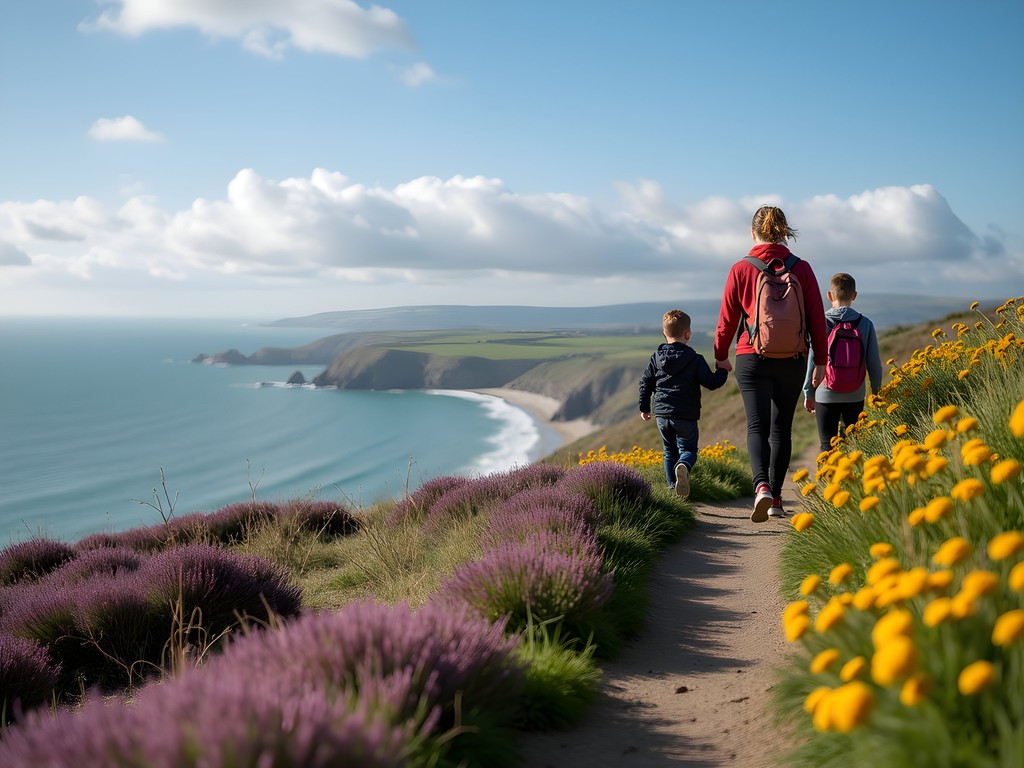
💡 Pro Tips
- Wear proper walking shoes as paths can be muddy even in summer
- Check tide times before setting out—some sections of beach access are tide-dependent
- Consider bringing a trekking pole for the steeper sections if walking with older adults or young children
Bull Island Nature Reserve: A Coastal Sanctuary
Bull Island represents one of Dublin's most remarkable ecological stories—a landform created entirely by human intervention that has evolved into one of Ireland's most important nature reserves. This 5km sandbar, formed as an unintended consequence of harbor engineering in the 1800s, now hosts an internationally significant wetland ecosystem.
The island's Dollymount Strand offers 5km of pristine beach—a rarity so close to a European capital. On summer weekends, families fly kites, build sandcastles, and paddle in the relatively shallow waters of Dublin Bay. For wildlife enthusiasts, the salt marshes and mudflats host over 180 species of birds, including many migratory visitors.
During my visits documenting coastal ecosystems, I've found that children particularly delight in the miniature worlds revealed at low tide. A quality tide pool exploration kit transforms a simple beach walk into an educational adventure, allowing young naturalists to temporarily examine tiny crustaceans and mollusks before returning them safely to their homes.
The dune ecosystem provides another dimension to explore, with specialized plants adapted to this harsh sandy environment. The island's unique position—accessible by causeway yet distinctly separate from the mainland—creates a psychological sense of escape that belies its proximity to the city center.
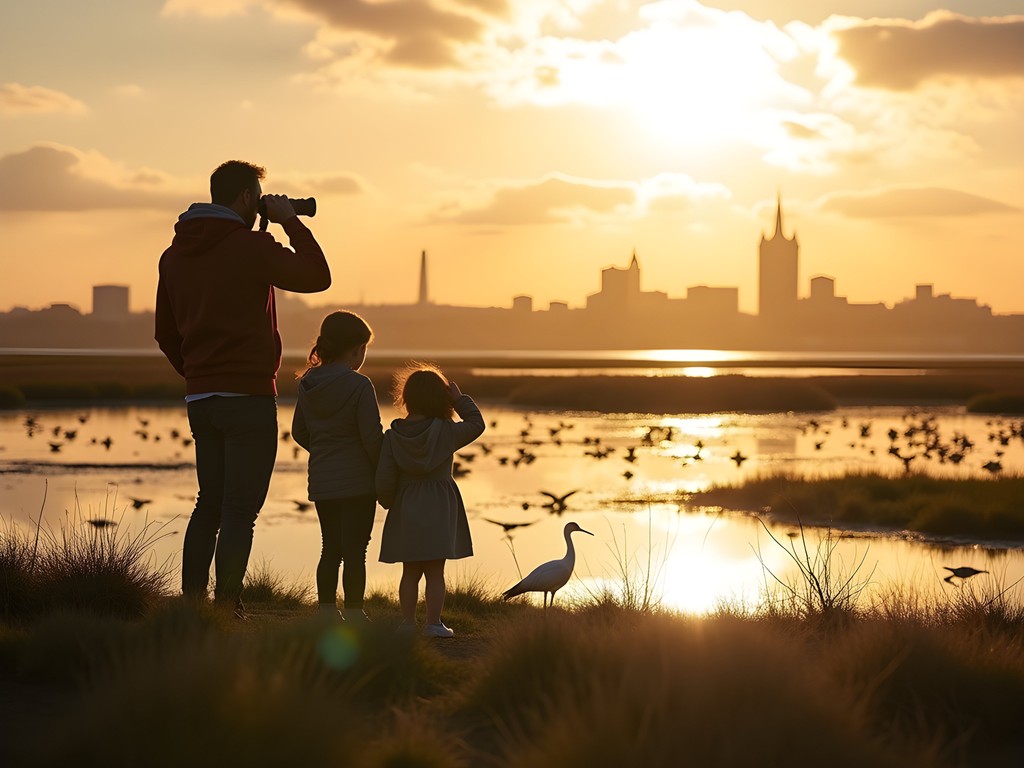
💡 Pro Tips
- Visit at low tide for the best beachcombing and wildlife viewing opportunities
- Bring waterproof footwear if you plan to explore the salt marshes
- Pack sun protection—the exposed beach offers little natural shade
Ticknock Forest: Mountain Views Above the City
The Dublin Mountains provide the city's southern backdrop, and Ticknock Forest offers perhaps the most accessible wilderness experience within this range. As someone who has hiked extensively through rainforests in South America and Southeast Asia, I find something equally compelling about these more temperate woodlands, particularly in the quality of light filtering through the mixed conifer and deciduous canopy.
The main draw here is the Three Rock Mountain trail, which delivers panoramic views across Dublin Bay, the city, and on clear days, even as far as the Mountains of Mourne in Northern Ireland. At just 30 minutes' drive from the city center, the transition from urban environment to mountain wilderness happens with remarkable speed.
For families with children, the 5.5km Dublin Mountains Way section through Ticknock provides enough challenge to feel adventurous without being overwhelming. The terrain requires proper footwear, and I always recommend families bring a hiking backpack for children, which encourages proper hydration while giving young ones a sense of self-sufficiency on the trail.
The forest's elevation means it can be significantly cooler than the city, creating a refreshing retreat during summer heat waves. After two decades of global travels, I've come to appreciate these accessible wilderness spaces as vital components of urban mental health—something Dublin provides in abundance.

💡 Pro Tips
- Start early to secure parking at the limited Ticknock car park
- Download the Coillte Outdoors app for trail maps before visiting as mobile reception can be spotty
- Pack layers even in summer as mountain weather changes quickly
North Bull Wall and Dollymount Strand: Where City Meets Sea
While technically part of the Bull Island ecosystem, the North Bull Wall and adjoining Dollymount Strand deserve special mention for families seeking easily accessible outdoor adventures. This 5km stretch of sandy beach runs parallel to the affluent neighborhoods of Clontarf and Raheny, yet feels worlds away from urban life.
The Bull Wall itself—a granite seawall extending into Dublin Bay—offers a fascinating walking route with the wooden bridge section dating back to 1819. Children delight in the transition from land to sea, with the historic red lighthouse marking the endpoint of this maritime adventure.
What makes this area particularly suitable for families is the gradual shelving of the beach, creating safe paddling areas at low tide. During my summer visits documenting Dublin's coastal habitats, I've observed the beach transform into a natural playground—children building elaborate sand structures while parents relax against the backdrop of distant mountains.
For families planning a full beach day, I recommend bringing a beach shelter which provides essential sun protection while creating a comfortable base for exploration. Unlike more remote beaches I've visited globally, Dollymount's proximity to the city means you're never far from facilities while still enjoying a genuine coastal wilderness experience.
The juxtaposition of wild nature against Dublin's skyline creates a uniquely accessible outdoor experience that reminds us how thin the boundary between urban and natural worlds can be.
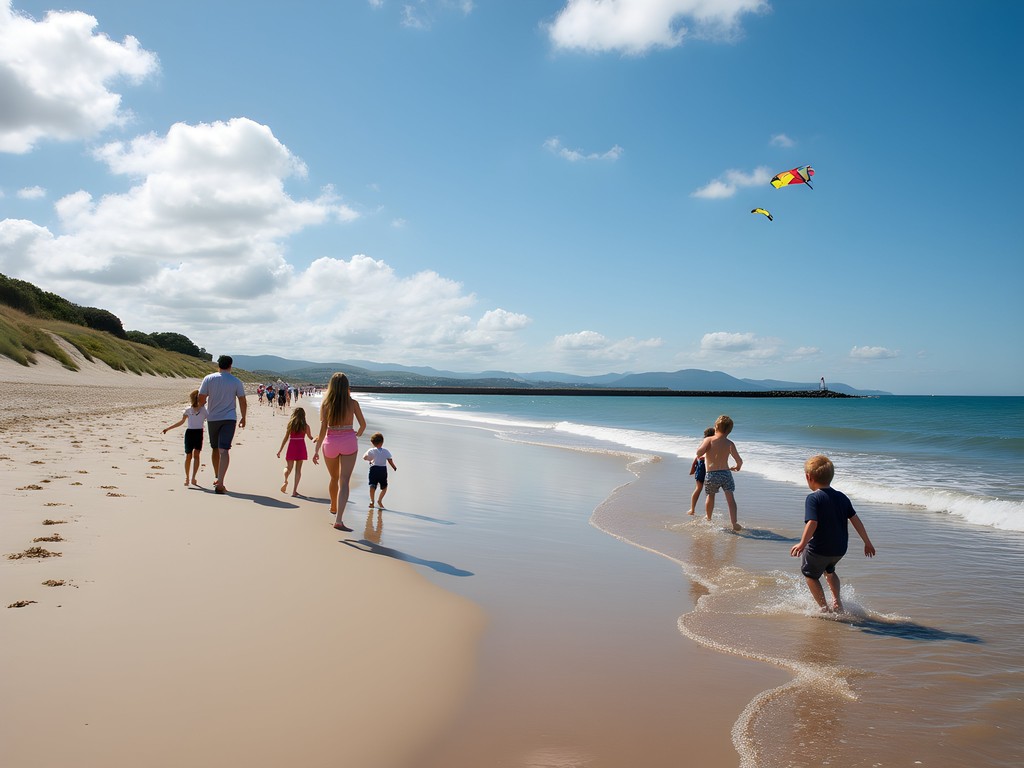
💡 Pro Tips
- Time your visit with low tide for maximum beach area and safer swimming conditions
- The beach is officially lifeguarded during summer months, but always check flag warnings
- For younger children, the sheltered section near the wooden bridge offers the calmest waters
Grand Canal Way: Linear Park Through Dublin's Heart
The Grand Canal, constructed in the late 18th century to connect Dublin with the River Shannon, now serves as a linear park cutting through the city's southern neighborhoods. Unlike the more wilderness-focused destinations on this list, the canal offers a different kind of nature experience—one where industrial heritage and urban wildlife coexist in fascinating ways.
For families with younger children or those seeking accessible outdoor experiences, the level towpath provides easy walking and cycling routes. The section between Portobello and Grand Canal Dock particularly rewards exploration, with colorful barges, historic locks, and waterside cafés creating natural rest points.
During my documentation of urban waterways across Europe, I've found canal ecosystems particularly resilient. Dublin's Grand Canal supports surprising biodiversity—moorhens nest among reeds, fish rise to the surface at dusk, and urban pollinators buzz between wildflowers along the banks.
For family cycling adventures, the canal towpath offers a traffic-free route through the city. Children particularly enjoy watching the lock system in operation—a living demonstration of simple machines and water physics. I recommend families bring a waterproof picnic blanket for impromptu stops along the banks, creating memorable canal-side lunches away from the busier city parks.
What makes the canal special is its function as a green corridor—connecting neighborhoods and providing linear movement through the city in a way that feels removed from urban stress while remaining thoroughly embedded in Dublin's fabric.
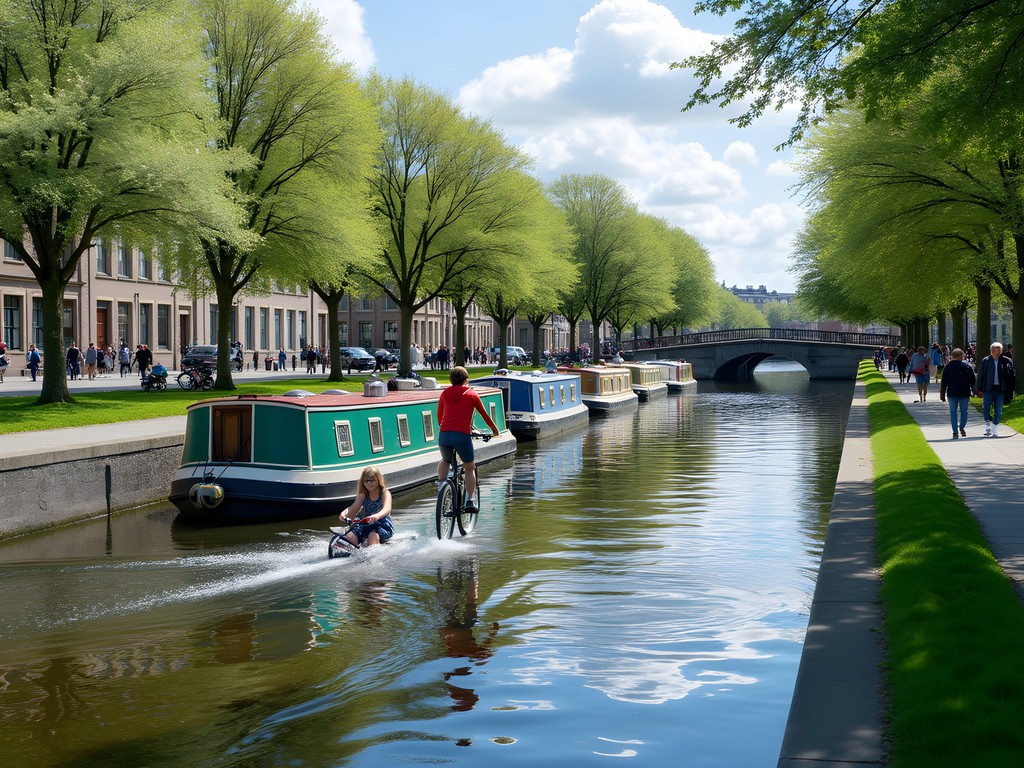
💡 Pro Tips
- Start at Grand Canal Dock and walk westward to experience the transition from modern development to historic neighborhoods
- Bring bread for the swans and ducks, but avoid areas with signs prohibiting feeding
- Download the Grand Canal Way map to identify access points and nearby playgrounds for breaks
St. Anne's Park: Historic Estate Turned Public Paradise
At 240 acres, St. Anne's Park represents Dublin's second-largest public park after Phoenix Park, yet it maintains a distinctly different character. As the former estate of the Guinness brewing family, the grounds retain a designed landscape quality that balances formal gardens with more naturalistic woodland areas.
For families, St. Anne's offers perhaps the most diverse range of outdoor experiences in Dublin. The Red Stables area hosts weekend markets where children can sample local foods while parents browse artisan crafts. The extensive playground areas cater to different age groups, while the duck pond provides endless fascination for younger visitors.
What particularly draws me to St. Anne's during my Dublin visits is the collection of follies and garden features scattered throughout the grounds. These architectural curiosities—from the Herculanean Temple to the Roman Tower—create natural discovery points for family exploration. I've found that children respond instinctively to these whimsical structures, creating their own narratives around these mysterious buildings.
The rose garden, with over 25 different varieties, peaks in June and July, offering sensory experiences that complement the more active play areas. For family picnics, I recommend bringing a insulated cooler tote which keeps lunch fresh while being far more stylish and practical than traditional coolers.
The park's location in the Raheny/Clontarf area places it slightly outside the typical tourist circuit, meaning you'll share this space primarily with Dubliners—offering authentic cultural immersion alongside natural experiences.
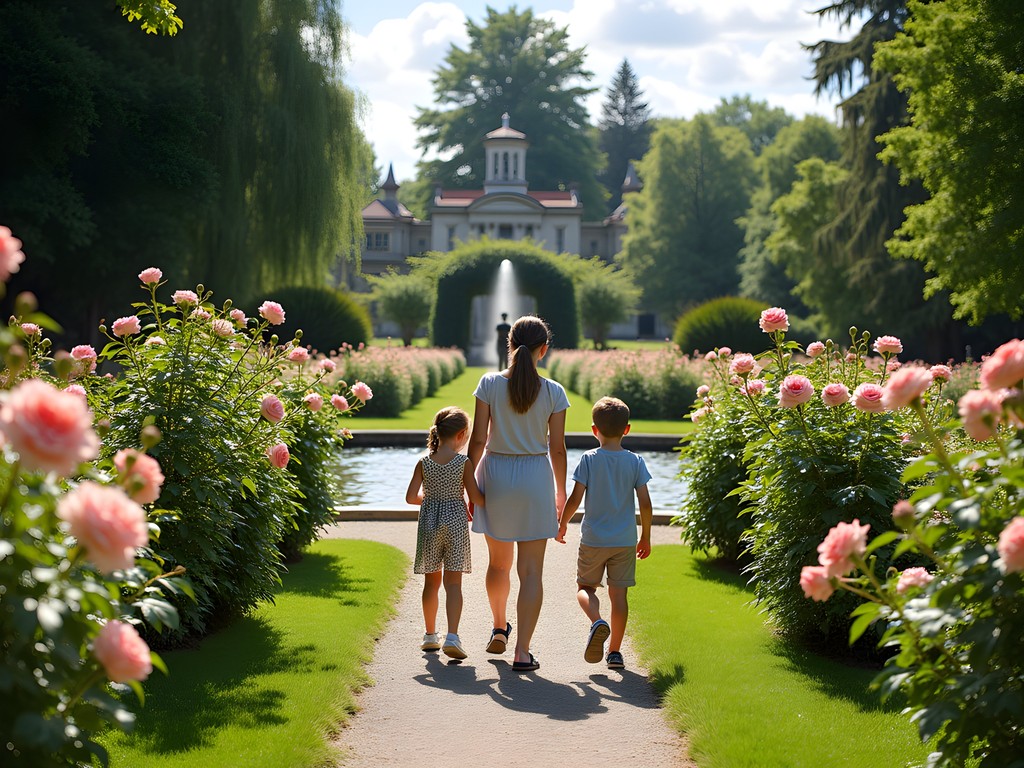
💡 Pro Tips
- Visit on Saturday mornings for the farmers' market at the Red Stables
- Bring a ball or frisbee for the extensive open playing fields
- Check the Dublin City Council website before visiting as the park often hosts free family events during summer
Final Thoughts
After twenty years balancing my counseling practice with environmental documentation across three continents, I've developed a profound appreciation for urban wilderness. Dublin exemplifies how a capital city can maintain vital connections to the natural world—not as manicured afterthoughts but as integral parts of the urban fabric.
These seven natural escapes offer families something increasingly rare: accessible wilderness experiences that require minimal planning and modest budgets. Whether you have just a weekend or a full week in Dublin, incorporating these green spaces into your itinerary provides not just recreation but genuine restoration.
As both a mental health professional and lifelong nature enthusiast, I encourage you to approach these spaces with presence. Let children set the pace. Notice the quality of light filtering through leaves, the texture of bark beneath fingertips, the symphony of birdsong competing with distant traffic. These sensory experiences form the foundation of lasting family memories while simultaneously building environmental awareness in younger generations.
Dublin's natural spaces aren't merely scenic backdrops for your family photographs—they're living ecosystems offering profound connections to something larger than ourselves. In our increasingly digital world, such authentic encounters with nature may be the most valuable souvenirs you bring home.
✨ Key Takeaways
- Dublin offers genuine wilderness experiences within city limits suitable for all ages and abilities
- Most natural areas are accessible via public transport, making them ideal for budget-conscious families
- Early morning visits provide the best wildlife viewing opportunities and avoid summer crowds
📋 Practical Information
Best Time to Visit
May through September, with June and July offering longest daylight hours
Budget Estimate
€0-50 per day for a family of four (most sites free; costs mainly for transportation and picnic supplies)
Recommended Duration
Allow half-day for each location; full weekend to visit 3-4 sites
Difficulty Level
Easy To Moderate (Phoenix Park And Canal Paths Suitable For All Abilities; Howth And Ticknock Require Moderate Fitness)


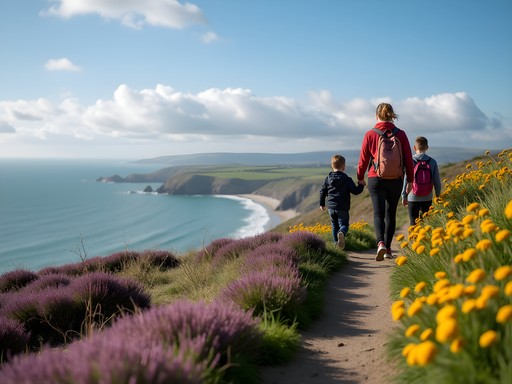
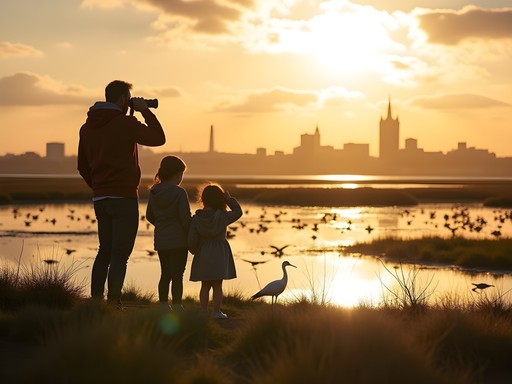
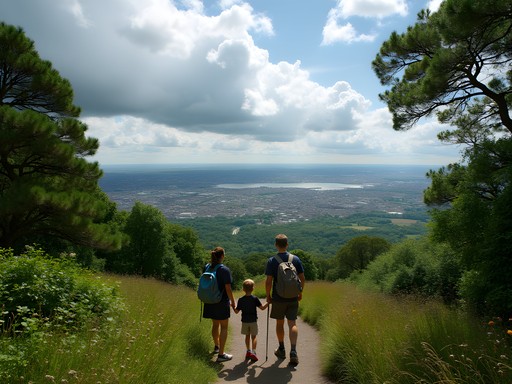
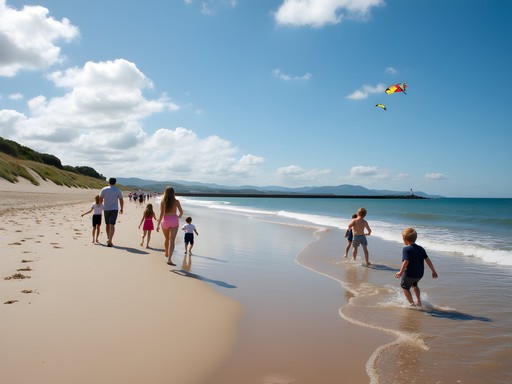
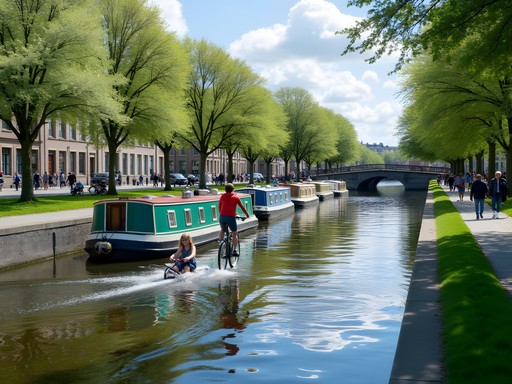








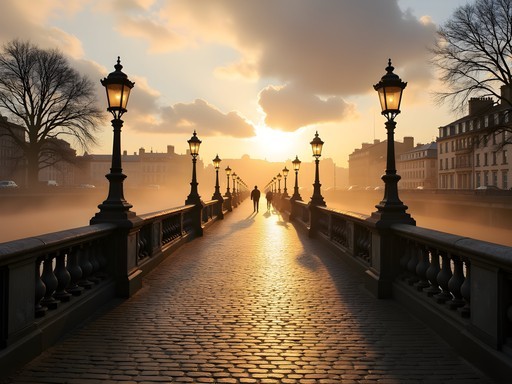

Comments
Frank Garcia
Having grown up in Belfast, I've spent countless weekends in Dublin and this list is spot on. One thing I'd add about Phoenix Park - the Dublin Zoo there is actually quite good if you're traveling with family. For those looking to escape the typical tourist trail, Bull Island's ecosystem is fascinating from an environmental perspective. The way the sand dunes have formed creates distinct microhabitats that support surprising biodiversity. I documented over 20 bird species in just one afternoon visit last month.
smartbackpacker
Phoenix Park is massive! Spent half a day there and barely scratched the surface.
Sage Dixon
Hayden, your post brought back amazing memories! I spent a week in Dublin last year and completely fell in love with Howth. The cliff path was magical - we spotted seals in the harbor and even saw a peregrine falcon hunting along the cliffs. We packed a picnic and spent hours just soaking in those coastal views. One tip for readers: if you're heading to Phoenix Park, rent bikes at the entrance. It's massive and having wheels makes it so much easier to explore the hidden corners and spot the deer herds. The Victorian Tea Rooms make a perfect mid-ride coffee stop!
dreambackpacker
OMG I LOVE DUBLIN'S GREEN SPACES!!! Ticknock Forest was the highlight of my trip last year - those views over the whole city are UNREAL! Totally worth the uphill hike. Can't wait to go back and try the other spots on this list!
Nicole Russell
This post couldn't have come at a better time! I'm planning a winter trip to Dublin and was worried there wouldn't be enough outdoor activities. Bull Island looks perfect for birdwatching - I'm bringing my binoculars which have been amazing for spotting wildlife on my travels. Has anyone done Ticknock Forest in winter? Wondering if the trails get too muddy or if they're still manageable with proper boots?
greenadventurer
Is Bull Island good to visit in November? Planning a trip next month and wondering if it's worth it in colder weather?
Frank Garcia
Actually, Bull Island is brilliant in November! Less crowded and you'll see tons of migratory birds. Just layer up and bring a compact binoculars if you're into birdwatching. The light can be gorgeous for photography too.
greenadventurer
Thanks for the tip! I'll definitely check it out then.
Sage Dixon
Hayden, this post brings back so many memories! The Howth Cliff Path absolutely blew me away last year. I started early morning when the mist was still hanging over the water - felt like walking through a fantasy novel. Made it all the way to the lighthouse and back, stopping for the best seafood lunch at that little harbor spot. One tip for readers: the DART train makes it super easy to reach from the city center, and the views along the coast are worth the trip alone!
mountainbackpacker6700
Phoenix Park is amazing! Spent a whole day there last summer and still didn't see everything. The wild deer were the highlight - they came so close! Didn't expect to find such a massive green space right in Dublin. Definitely bring good walking shoes though, I underestimated how big it actually is.
Sage Dixon
The deer are incredible, right? I was there in spring when the fawns were around - magical experience!
mountainbackpacker6700
Oh wow, spring must be amazing! I need to go back and see that.
summerlover
Just got back from Dublin last week and can confirm the Howth Cliff Path is AMAZING! We did the full loop (about 3 hours) and the views were breathtaking. Spotted seals in the harbor too! Ended with fish and chips at one of the harbor restaurants. Definitely the highlight of our trip. I'd recommend going on a weekday if possible - we went Saturday and it was pretty crowded in some spots.
waveclimber
Did you need to rent a car to get to Howth or is public transport decent?
summerlover
No car needed! The DART train goes straight from central Dublin to Howth in about 30 minutes. Super easy and runs frequently. Just follow the crowds from the station to the trailhead.
bluezone
Great post! Is spring a good time to visit these spots? Planning a trip to Dublin next April and would love to include some of these green spaces in my itinerary.
Sage Dixon
April in Dublin is gorgeous! The Phoenix Park will be lush and green, and wildflowers start appearing on the Howth cliffs. Just pack layers - I got caught in a sudden shower at Ticknock last spring!
bluezone
Thanks for the tip about layers! Any recommendations on which of these spots is most accessible by public transport? Not planning to rent a car.
Sage Dixon
Phoenix Park is super easy - just hop on the red Luas line to Heuston and it's a short walk. For Howth, take the DART train directly there from the city center. Bull Island is accessible by Dublin Bus routes 130 or H1. I used my waterproof daypack constantly in Dublin - those spring showers are no joke!
Venture X
Premium card with 2X miles, $300 travel credit, Priority Pass